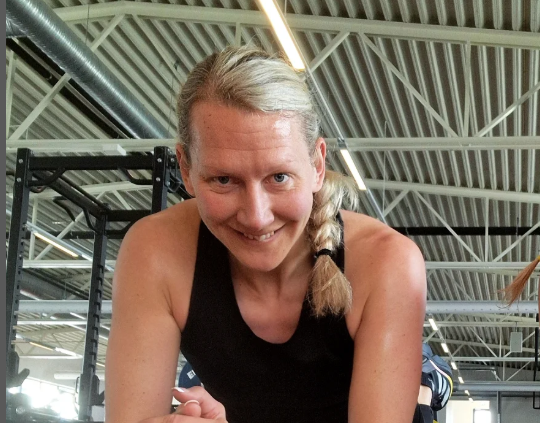Tess Olofsson’s name has been more frequently seen next to important international football games in recent years. Although both fans and analysts analyze her match choices, one aspect of her that is oddly missing from the majority of public profiles is her height. In a data-driven sector that usually records every inch, stat, and split-second, it is surprising that no official record or sports archive offers that particular number.

Referees have become more well-known over the last 10 years, not just because of their decisions but also because of the exceptional consistency and fitness they are required to uphold. As a rising star in elite officiating, Olofsson has supervised matches at the Olympic Games, the FIFA Women’s World Cup, and the UEFA Women’s Euro. Even though her height isn’t measured in centimeters, her presence on the field makes it obvious.
Tess Olofsson – Bio Data and Career Profile
| Attribute | Details |
|---|---|
| Full Name | Tess Anna Therése Olofsson |
| Date of Birth | January 24, 1988 |
| Age | 37 (as of 2025) |
| Nationality | Swedish |
| Profession | International Football Referee, Police Officer |
| FIFA Listed Since | 2016 |
| Domestic Leagues | Svenska Cupen (2018–), Superettan (2020–), Women’s Damallsvenskan (2020–) |
| Major Tournaments | UEFA Women’s Euro 2022, FIFA Women’s World Cup 2023, Olympics Paris 2024 |
| Most Notable Matches | Olympic Final 2024: USA vs Brazil |
| Recognitions | Referee of the Year (2015, 2018, 2019 – Sweden) |
| Relationship Status | Married to wife; one child |
| Residence | Near Piteå, Sweden |
| Estimated Net Worth | USD 500k–700k |
| Source Reference | https://www.transfermarkt.us/tess-olofsson/profil/schiedsrichter/7651 |
Through the use of modern officiating tactics, emotional fortitude, and disciplined fitness, Olofsson has considerably closed the gender gap that has historically existed in elite football officiating. She was neither a footnote nor a filler when she was assigned to the 2024 Olympic final between the United States and Brazil. Her performance was extremely successful, earning recognition for her firm calls, precise match management, and composure under pressure.
More than just an incomplete statistic, the lack of her height data shows a subtle societal shift. For many years, athletic bios have automatically included physical characteristics, particularly height. This still matters in specific situations: a goalie’s wingspan becomes strategy, and a center-back who is 195 cm tall commands aerial duels. However, height is less of a predictor of success for referees like Olofsson. Rather, career longevity is determined by decision-making, vision, and agility.
It takes more than just a few centimeters to establish presence when officiating. It is built by confident whistleblowing, strategic positioning, and the capacity to maintain authority in the face of public scrutiny. Tess Olofsson doesn’t need to be tall to be respected; she is incredibly obvious in her behavior. She conveys much more with her voice, posture, and preparedness than a height statistic ever could.
Olofsson talked candidly about personal issues during her July 2025 radio appearance on “Sommar i P1,” mentioning safety worries that periodically necessitated police escorts following contentious games. These revelations were incredibly humanizing. They provided examples of how female referees deal with a unique set of pressures despite their exceptional professionalism. She is figuratively towering because of her bravery in sharing these stories.
Olofsson’s career path is especially inventive because it strikes a balance between public service and professional refereeing. She continues to be dedicated to her work as a police officer even as she scales world sports. This dual job is very adaptable and represents a contemporary understanding of social responsibility and career aspirations coexisting together. Referees like her are now able to function consistently into their late 30s thanks to much enhanced physical training practices, which challenges earlier age standards for match officials.
Her prominence is more than a passing trend for young girls in Sweden and outside. In athletics, she stands for openly LGBT identity, postpartum comebacks, and shared parenthood. Olofsson was candid about his reluctance to start a family when questioned about it in relation to his demanding training regimen and tournament travel. In the end, her wife gave birth to their kid, enabling Olofsson to continue serving as an active officiant while accepting parenthood in a joint role. Redefining established gender norms around caregiving and compromising one’s work is especially advantageous.
Importantly, her visibility goes beyond representation. She broadens the definition of authority in football by forming strategic alliances and taking on officiating duties. Although many people still automatically picture tall, masculine individuals imposing order on the field, Olofsson is changing those perceptions by subtly emulating a different stereotype rather than contesting them.
Fans continue to look up her height on FIFA profiles and transfermarkt out of curiosity. It’s a habit brought on by decades of using measures to profile players. However, Olofsson intentionally omits that detail, much like many other officials who are altering international football. This exclusion, whether deliberate or accidental, encourages onlookers to concentrate on what can be measured by impact rather than by inches.
More seats at the table have been made available by UEFA and FIFA since the introduction of new regulations pertaining to gender inclusion in sports officiating. Olofsson’s assignments to more important games imply that traditional factors like stature are no longer as important as experience, judgment, and fairness. She is incredibly dependable in both her fitness and decision-making. Fans, clubs, and federations all expect this dependability. She also delivers.











